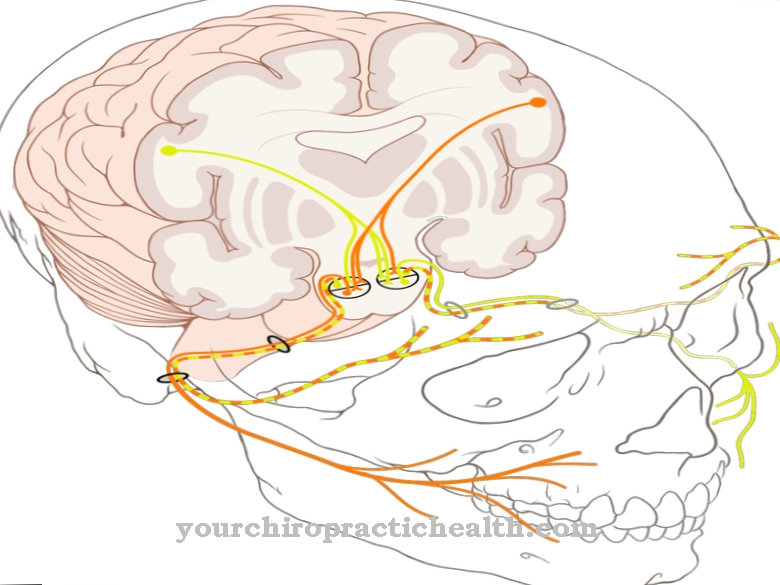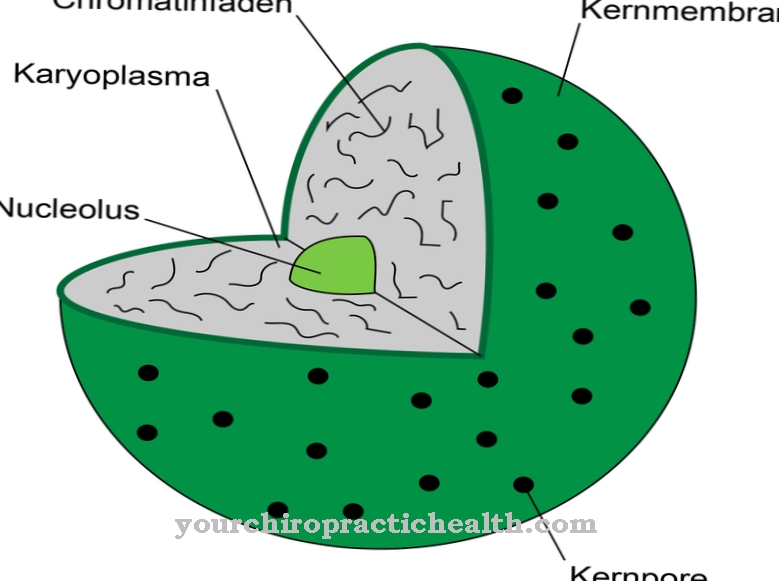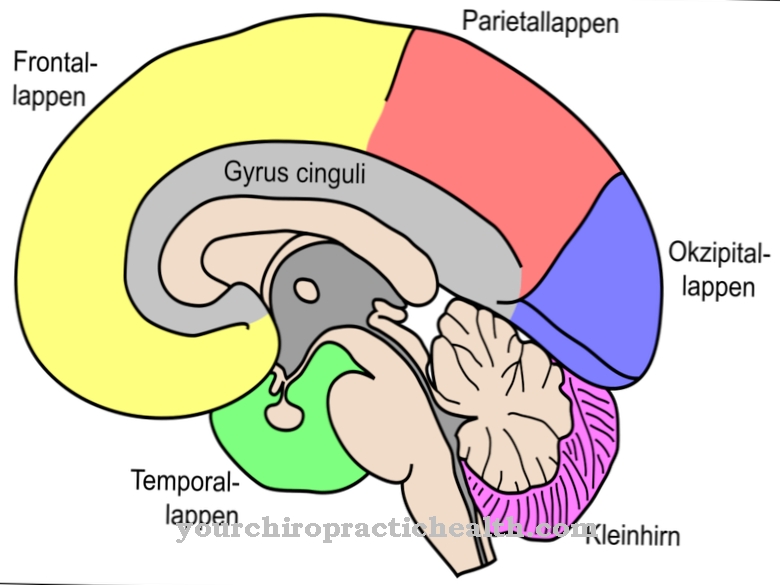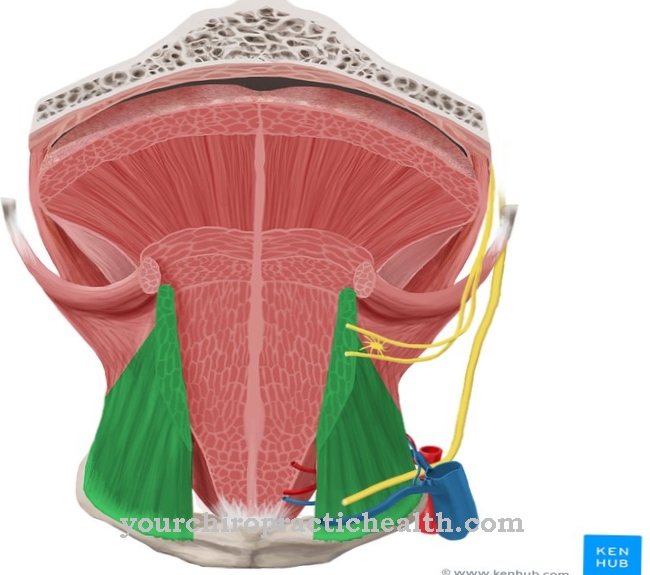Osteoblasts are mostly referred to as bone-building cells and osteoclasts as bone-breaking cells. This view is certainly too short-sighted. Rather, a meaningful interaction of the two cell types is the prerequisite for a balance in bone metabolism.
What are osteoblasts?
A living bone is constantly being remodeled and requires the activity of the cells that break down and rebuild. A balance between the dissolution and renewal of the bone substance is extremely important in order to adapt the structure of the bone to the metabolic activity and stress.
In this context, the osteoblasts take on the part of building up the bones, they form the components of the bone substance (matrix). On the other hand, they also regulate the activity of the osteoclasts through inhibition or stimulation. As a result, the cooperation between the two cell types is perfectly coordinated and the activity is adapted to requirements.
In the constant breakdown and build-up process, the osteoblasts themselves also change. They are transferred from their active form to an inactive one, the osteocytes. These are then an important component of the bone substance, but no longer take part in the regeneration process. At the same time, new active osteoblasts are constantly being reproduced in order to continue to have a sufficient number of structural cells available.
Anatomy & structure
While osteoclasts belong to the group of macrophages (giant scavenger cells), osteoblasts develop from undifferentiated stem cells of the bone connective tissue. They are small, bean-shaped cells and show the typical structure of very metabolically active cells.
On the one hand, many mitochondria can be seen inside, the power plants that provide the energy for the increased workload. Rough endoplasmic reticulum is also numerous. There the 3 important proteins are synthesized which are necessary for the structure of the bone substance. Type I collagen is important for bone flexibility. Osteocalcin and osteonectin are proteins that are responsible for mineralizing the bone.
The pronounced Golgi apparatus with its membrane stack takes over the transport of the synthesized substances to the cell membrane, from where they are released to the outside, into the intercellular space and passed on to their destination.
The presence of 3 vitamins is of crucial importance for the structure of the substances described. In collagen production, vitamin C is needed for the cross-linking of the collagen fibrils, the prerequisite for the functionality of the protein. Vitamin K is required for the incorporation of calcium.
Finally, vitamin D ensures that sufficient calcium is absorbed into the blood through the intestine and is available for osteocalcin. Vitamin D needs sunlight to be made in the skin. The calcium is required for mineralization, i.e. for strengthening the bone.
Function & tasks
Remodeling processes are constantly taking place in living bones. Sport, exercise and weight bearing make the bones thicker and stronger; if these stimuli are absent, the bones become thinner and weaker. Defects must be repaired. The control center for these processes are the osteoblasts. They adapt their activity level and that of the osteoclasts to requirements.
Even under normal stress, incorrect loads or incorrect movements cause microtraumas that cause small cracks in the bone. These mini-fractures need to be repaired, a process that takes place constantly in the bone. The healing process always has the same sequence. First the osteoclasts come into action. They eliminate the defective tissue along with healthy cell material. A wound cavity (lacuna) is created that is larger than the actual defect. This procedure is intended to ensure that all of the destroyed material is actually removed and that new, intact bone tissue can actually arise.
The osteoblasts then begin to close and strengthen the lacuna again by forming bone tissue. The construction takes much longer than the previous disassembly.
If the bone is stressed more intensely by work or sport, pressure or tension or both occurs. Increased compression is caused by weights, and increased tension is caused by the transmission of the tendon pull to the bone.
As already mentioned, the osteoblasts act as a control instance for this process, so that the build-up and breakdown processes are always in balance. They are able to slow down or promote the activity of the osteoclasts. They release substances (rank ligand) that can dock onto receptors of the osteoclast and activate them. The release of another molecule (osteoprogesterin) can interrupt this process and stop the activity of the osteoclasts.
Diseases
Several bone diseases can be traced back to the fact that the equilibrium between the building up and breaking down processes in the bone metabolism is disturbed, usually due to a disruption of the function of the osteoblasts.
Scurvy is due to an insufficient supply of vitamin C. As a rule, malnutrition is responsible for this, which is why the disease now predominantly occurs in underdeveloped countries. The lack of vitamin C means that the osteoblasts cannot create the necessary cross-links between the collagen chains. Defective collagen is created that can no longer perform its tasks.
Rickets in children, known as osteomalacia in adults, is caused by a lack of vitamin D as a result of decreased absorption and short exposure to the sun. The result is that not enough calcium is absorbed through the intestine and the osteoblasts have it available for incorporation into the bones. As a result, they lack firmness, they remain or become soft and deform, especially where they are exposed to pressure (bow legs).
In osteoporosis, the balance of bone metabolism gets out of hand. Either the constructive activity of the osteoblasts is reduced or their control function on the activity of the osteoclasts is reduced. In both cases there is an increased breakdown of bone substance, the bone density decreases. In addition to other symptoms, the increased tendency to break with skeletal deformations is a typical feature of this disease.
Typical & common bone diseases
- osteoporosis
- Bone pain
- Broken bone
- Paget's disease



























